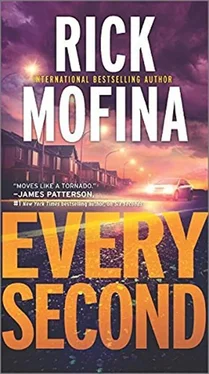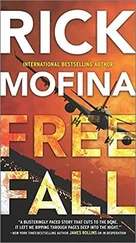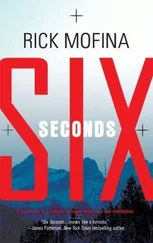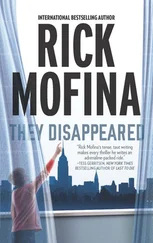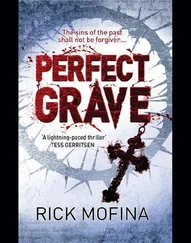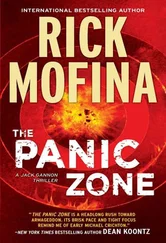Varner muttered something under his breath.
“Listen,” he said, “like I told you before, this is an extremely active investigation. The release of too much information is dangerous.”
“The story’s already been flashing around the zippers in Times Square. I know you guys don’t like releasing information, but you don’t want misleading stuff out there, that could be dangerous, too.”
She heard his irritation as he exhaled, but sensed him warming to her.
“This is not for attribution to me, not even to the Bureau. You got that?”
“Of course.”
“I’m not confirming anything.”
“Okay.”
“You’d be correct to disregard the information reported by Signal Point.”
“Thank you. Do you have any suspects, or possible motives? What about the family’s history?”
“That’s it, Kate. I’ve got to go. There might be a press conference at One Police Plaza later today.”
After the call, Kate immediately wrote Reeka an email.
Our story’s correct. Signal Point’s is wrong. This has been verified by police sources close to the investigation.
She jabbed the enter key hard, sending it with a vengeance.
Getting up to get a fresh coffee from the lunchroom, Kate reconsidered her initial impression of Varner. He’d impressed her just now. Sure, he’d played the surly investigator at the crime scene, but he’d just demonstrated that he was willing to work with her, which put matters in a different light. What she really liked was how he’d used her first name. That was nice, she thought, adding milk to her coffee when her phone rang.
The caller’s number was blocked.
“Kate Page, Newslead.”
“You’re the reporter who’s asking questions about the Fulton family in Queens?”
The woman on the phone sounded a little shaky, as if she’d had trouble deciding to call.
“Yes.”
“I have information that might help you.”
“That’s great. Who’s this?”
“I… We can’t talk over the phone. Are you in Manhattan? I understand that’s where your office is.”
“Yes, I’m at the office now.”
“Can you meet me in thirty minutes?”
“I’m sorry, but I can’t meet with you unless you give me some sense of what you want to talk about.”
The woman hesitated. When she spoke again, her voice quavered.
“I know the truth about Lori Fulton.”
New York City
Across the city, near the Manhattan side of the Brooklyn Bridge at NYPD Headquarters, Mae Clarke downed the last of her tepid coffee, fighting the urge to get a fresh cup.
She was trying to cut down. Besides, she couldn’t leave her desk because at any moment she was expecting prints on the red ball out of Queens, the bank robbery abduction case. The lab had called her supervisor to say the file was on its way.
Mae shoved a stick of Juicy Fruit in her mouth.
She was one of the NYPD’s best fingerprint techs and she was ready. Investigators had already obtained a set of elimination prints for each of the family members-from the parents’ workplaces, and through a child ID safety program for the son.
That was good.
Although Mae didn’t have prints for their relatives, or for friends or neighbors who may have been invited into the family’s home, she knew that having prints for the key players was a big advantage.
Mae’s computer chimed.
Here we go.
Chewing faster on her gum, she opened the file-a clear set of unidentified impressions from the right hand: one from the right thumb and one from the right forefinger. They’d been collected from balled duct tape.
Mae began studying the loops, whorls and arches, analyzing and comparing them against the elimination set. It didn’t take long to confirm that the prints on the tape did not come from any member of the family.
With a few keystrokes she submitted the unidentified prints to the New York State Criminal History Record Database-the state’s primary system for fingerprint identification. The database stored prints belonging to anyone arrested for a finger-printable offense.
It allowed for rapid searching through a range of state fingerprint files-those taken from crime scenes, from gun permit holders, from various professional license applications and also from unsolved cases.
After some thirty seconds, her submission came back with two hits.
That’s a start.
Her keyboard clacked as she submitted the prints to the mother of all databases, the FBI’s Integrated Automated Fingerprint Identification System, or IAFIS. The system held the criminal histories and fingerprints for more than seventy million people in every state across the country, drawn from every local, regional, state and national network.
This search would take a bit longer, so she returned to the lunchroom where she talked herself into a bottle of water instead of the coffee she was really craving. By the time she’d returned to her desk, her search was done.
IAFIS offered a list of five “possibles” who closely matched her unidentified submission. With the two from the New York system, she now had seven candidates.
She unwrapped a fresh stick of gum, enjoying its sweetness as she began making a visual point-by-point comparison between the duct tape prints and her seven samples. This was when she was at her best, zeroing in on the critical minutiae points, like the trail of ridges near the tip of the forefinger where she’d found dissimilarities. That eliminated the first two candidates right off.
For the next set she enlarged the sample to the point where she could count the number of ridges on the thumb. Definite differences emerged.
That eliminated all of the others but one.
Mae sat up, narrowing her eyes as she compared her submission from the duct tape with the computer’s remaining sample. She concentrated on cluster details, spots, hooks, bifurcations and tented arches.
All the minutiae points matched.
The branching of the ridges matched.
Her breathing quickened as she began counting up the clear points of comparison where the two samples aligned. Some courts required ten to fifteen clear point matches. She had twenty-three and was still counting, knowing that one divergent point would instantly eliminate a print. By the time she’d compared the left slanting patterns from the thumb, she had twenty-eight clear points of comparison and was thinking ahead to what it would be like when she was testifying in court.
These prints are consistent with those collected at the crime scene.
She confirmed the identification number of her new subject and submitted a query to several databanks, including the FBI’s National Crime Information Center.
Who are you?
While waiting, forever-thorough Mae submitted the elimination prints-those that belonged to Dan, Lori and Billy Fulton-to the New York State and FBI databases, as well.
It was a routine check.
After a few more minutes she got a response to her query for her unidentified mystery print lifted from the duct tape.
The print was out of California.
The query had been run through an array of California’s systems, the California Law Enforcement Telecommunication System, California’s DMV, the Department of Corrections, including the Parole Law Enforcement Automated Data System, and the Automated Criminal History System, which could verify parolee history, offender identification, arrest records, convictions, holds and commitments for all California law enforcement agencies, even create All Points Bulletins and drop warrants.
The single hit identified the prints from the duct tape. The face of a white male appeared on her monitor, and Mae read the accompanying information, then hurriedly went to the subject’s central file summary to search for offenses.
Читать дальше
Конец ознакомительного отрывка
Купить книгу
